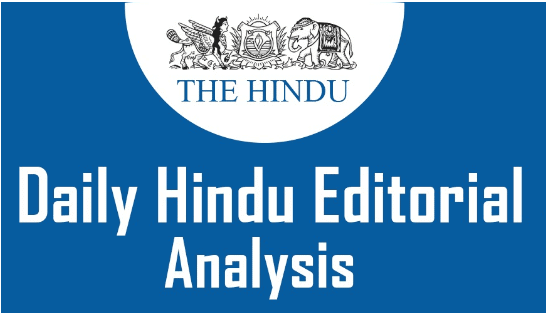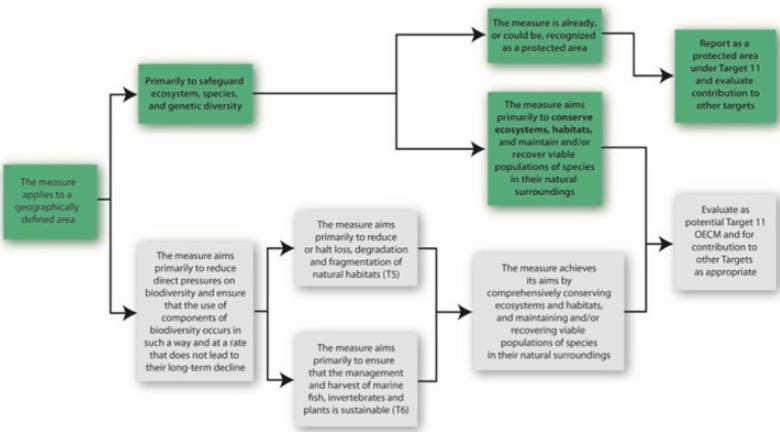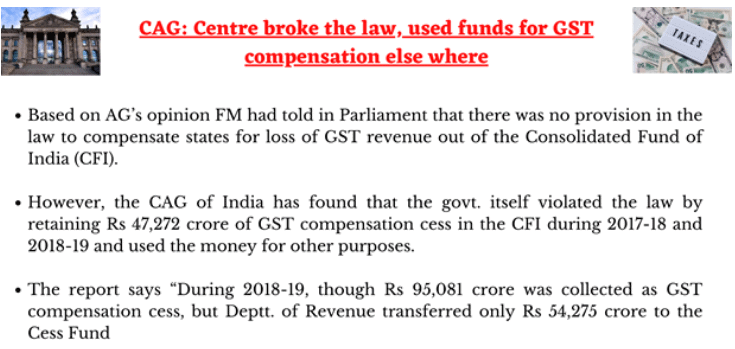The Hindu Editorial Analysis- 3rd October, 2020 | Additional Study Material for UPSC PDF Download

1. PATHWAYS TO DIVERSITY: ON UN BIODIVERSITY SUMMIT-
GS 3- Bio diversity, Environment
Context
The UN Summit on Biodiversity convened on September 30 in the midst of a global crisis caused by the novel coronavirus that is thought to have spilled over to humans from an animal reservoir.

Eroding Eco-System Health
(i) In New York, member-nations of the Convention on Biological Diversity (CBD) took note of the link between biodiversity loss and the spread of animal pathogens.
(ii) This calls for an end to destructive industrial and commercial practices.
(iii) There is consensus that conservation targets set a decade ago in Aichi, Japan, to be achieved by 2020, have spectacularly failed.
(iv) Evidence is presented by the latest UN Global Biodiversity Outlook 5 report: none of the 20 targets has been fully met.
(v) Many countries have chosen to ignore the connection between biodiversity and well-being, and depleted ecological capital in pursuit of financial prosperity.
(vi) Among the Aichi targets that fell by the wayside are those on-
(A) reform or phasing out of subsidies that erode biodiversity,
(B) steps for resource use within safe ecological limits,
(C) preventing industrial fisheries from destroying threatened species and vulnerable ecosystems, and;
(D) an end to pollution, including growing plastic waste.
(vii) A bright spot is the partial progress made on protecting surface and subsurface water, inland, coastal and marine areas.
(viii) But the losses appear even more stark from WWF’s Living Planet Index, which points to precipitous declines in vertebrate populations, a key indicator, by 68% over 1970 levels.
(ix) Faced with fast-eroding ecosystem health, the 196 CBD member-countries must chart a greener course, aligning it with the Paris Agreement, which has a significant impact on the health of flora and fauna.
Opportunity To Rebuild
(i) At Wednesday’s summit, India’s message was one of pride in an ancient conservation tradition, as one of the few megadiverse countries, and one that recognised the value of nature as much as the destructive impact of unregulated resources exploitation.
(ii) National laws of the 1970s and 1980s have indeed shielded(protected) islands of biodiversity, particularly in about 5% of the country’s land designated as protected areas.
(iii) But they are today seen as irritants to speedy extraction of natural resources.
(iv) In this unseemly hurry, due process is sought to be dispense(done away) with, as envisaged by the new EIA norms proposed by the NDA government.
(v) There is little concern for indigenous communities that have fostered biodiversity, and no effort to make them strong partners in improving the health of forests and buffer zones.
(vi) Now that CBD members are set to draw up fresh conservation targets to be finalised next year, India too has the opportunity to plan a trajectory of green growth after COVID-19.
(vii) India can plan around clean energy, ecological agriculture, a freeze on expansion of mining and dam-building, resource recovery from waste, and regeneration of arid lands.
(viii) It should join the coalition of the enlightened.
Conclusion
As a biodiversity convention key member, India’s pandemic recovery must be greened.
2. FLAGGING CESS NON-TRANSFER, ITS ECONOMIC IMPACT-
GS 2- Important aspects of governance, transparency and accountability
Cess- Tax On Tax. Collected For Specific Purpose
Context
(i) The Financial Audit Report of the Government of India by the Comptroller and Auditor General (C&AG) for 2018-19 placed in Parliament on September 23 has raised significant issues of a lack of transparency and propriety.
(ii) The Opposition-ruled States have criticised the Centre on the short transfer of Goods and Services Tax (GST) compensation cess revenues to the GST Compensation Fund.
(iii) The C&AG’s report stated that the Government of India did not transfer ₹6,466 crore of compensation cess revenue in 2017-18 and ₹40,806 crore in 2018-19.
(iv) Thus, a total of ₹47,272 crore was retained in the Consolidated Fund of India (CFI).
(v) The report also alluded(referred) to the non-apportionment of a portion of Integrated Goods and Service Tax (IGST) among the States and retaining it in the CFI.

Boosts Claim By States
(i) At a time when there is a raging controversy over the Union government’s refusal to compensate States for the shortfall in the collection of GST as per the agreement, and, instead, giving States two options to borrow, the C&AG’s report has only added more fuel to the fire of the States’ claim.
(ii) These States contend that when there were surplus collections, the Union government appropriated them and when there is a shortfall, it simply distances itself, instead asking States to borrow.
Levy Of Cesses
(i) The C&AG’s observations on a non-transfer of cesses, however, has a much larger macroeconomic significance.
(ii) There are as many as 35 cesses levied by the government of India. These are earmarked taxes and the proceeds should be used for the purposes for which they are levied.
(iii) A number of reserve funds or development boards have been created for these specified purposes and the collections from the cesses are supposed to be transferred to these funds placed in public accounts.
(iv) They are not a part of the CFI and cannot be used for defraying(covering) regular expenses.
(v) The transactions in public accounts are supposed to be done by the government as a trustee or a banker, and are not subject to vote by Parliament.
(vi) The C&AG has pointed out that in 2018-19, the collections from 35 Cesses amounted to nearly ₹2.75-lakh crore of which only ₹1.64-lakh crore was transferred to various reserve funds and boards designated for the purpose in Public Accounts.
(vii) Thus, the short transfer to the Public Account during the year amounted to ₹1.11-lakh crore payment.
(viii) Besides, ₹47,272 crore short transfers to the GST Compensation Cess Fund, there was a short payment of ₹38,000 crore in the transfer of the road cess to the Central Road and Infrastructure Fund.
(ix) In addition, the government collected ₹1,24,399 crore from the cess on crude oil which, as required, was not transferred to the Oil Industry Development Board (the designated Reserve Fund) and retained in the CFI.
(x) By short transfer of the realised amount of cess to the respective funds and boards in Public Account, the government understated revenue and fiscal deficits for the year; and it works out to more than 1.2% of GDP.
(xi) Thus, in addition to off Budget borrowings to cover fertilizer and food subsidy, financing irrigation projects from the Long Term Irrigation Fund (LTIF) created by the National Bank for Agriculture and Rural Development (NABARD), and financing of railway projects through borrowings from the Indian Railway Finance Corporation (IRFC), short transfer of cess revenue to public accounts is a method used to obfuscate(hide) the Budget to show lower revenue and fiscal deficits.
Process Becomes Opaque
(i) Should the government of India raise revenues through so many cesses?
(ii) Cesses are earmarked taxes and to ensure a minimum allocation to important and priority programmes, this method of financing could be used.
(iii) In India, even after a number of cesses and surcharges were abolished when the GST was implemented, there are as many as 35 cesses levied by the Finance and other Ministries of the Government of India.
(iv) The ostensible(apparent) reasoning for levying these cesses is the belief that ring fencing of revenue for specified priority purposes may evoke greater tax compliance as people can link the benefits with the taxes paid.
(v) However, when there are as many as 35 earmarked cesses, it is difficult to see all of them as priority areas requiring protection of funding.
(vi) There is also a possibility of limiting the funding of important and priority areas to the amount of cess collected even when they require much larger amounts.
(vii) Too many cesses also complicate the tax system and add to administrative and compliance costs.
(viii) In addition, the operation of the cesses involving collections and transfer to designated funds in the Public Accounts makes the entire process opaque as the operation of these funds too needs to be monitored and audited.
Governmental Arrangements
(i) A major reason for the proliferation(increase) of cesses in India is to be found in the inter-governmental fiscal arrangements.
(ii) Article 270 of the Constitution requires the Union government to distribute the proceeds from all Central taxes listed in the Union List based on the recommendation of the Finance Commission.
(iii) However, Article 271 excludes the distribution of the revenue from any surcharge or cess levied by the Union government for any specified purpose.
(iv) As the Finance Commissions are appointed once in five years, the Union government can raise additional revenue from taxes mainly through the levy of cesses and surcharges to avoid sharing them with the States.
(v) This has been practised for long and despite the adverse comments of many Finance Commissions, the Union government has found the practice convenient.
(vi) This is one of the ways to partially negate the recommendation of the Finance Commission, particularly when the Centre sees the recommendations as generous to the States.
(vii) After the Fourteenth Finance Commission recommended that the share of the States in the divisible pool be pegged at 42%, almost all discretionary increases in taxes were done by levying cesses and surcharges.
(viii) The large increases in additional excise duties on petroleum products this year will entirely accrue to the Centre.
(ix) The States’ share in the gross Central taxes was 35% in 2015-16, the first year of the Fourteenth Finance Commission’s recommendation, but decreased to 32% in 2019-20, and in the current year, it could be less than 30% as a large volume of revenue from petroleum products is sought to be raised through additional excise duties.
Conclusion
(i) As shown by Y.V. Reddy and G.R. Reddy, the cesses and surcharges constituted just about 3% of Central gross tax revenue in 2000-01; but in 2015-16, it was 16.5%.
(ii) It could be as much as 20% in 2020-21.
(iii) The issues raised by the C&AG relate merely to short transfer of funds, but the implications are much larger.
(iv) They relate to obfuscations(hiding) in the Budget and denying the share of the States in the divisible pool of taxes.
|
21 videos|562 docs|160 tests
|
FAQs on The Hindu Editorial Analysis- 3rd October, 2020 - Additional Study Material for UPSC
| 1. What is the significance of UPSC in the Indian context? |  |
| 2. What is the Civil Services Examination conducted by UPSC? |  |
| 3. How can one prepare effectively for the UPSC exams? |  |
| 4. What are the qualities that UPSC looks for in candidates during the interview stage? |  |
| 5. How does UPSC contribute to the overall governance of India? |  |
















